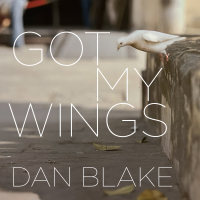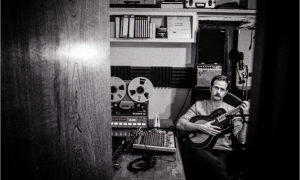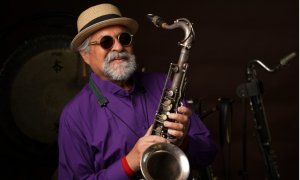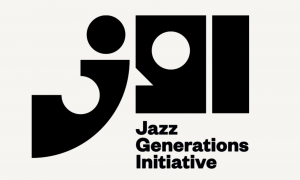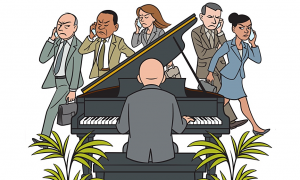Actually, quite a bit. As good as recordings are, they provide only half the story of an artist's gifts. As we know from the video clips on YouTube, seeing adds a whole new dimension and appreciation of a jazz musician. To see the body language of artists, how they talked, what their eyes were doing while performing, and how they interacted with other musicians contributes enormously to your impression of them as creative forces, entertainers and people.
Vaughan is a perfect example of a jazz artist whose brilliance soars when viewed on film. Of course, Vaughan sounds positively magical on her many studio dates from the late 1950s and early 1960s. But you haven't fully experienced her genius until you've seen her in action at the peak of her career. One of the finest examples of Vaughan on film is Sarah Vaughan: Live in '58 & '64 (Jazz Icons). Though this DVD was released last year, I only recently had a chance to view it and was blown away. I own most of Vaughan's recordings during this period, but my appreciation of her nuances, risk-taking and physical beauty positively skyrocketed after seeing this video.
Here, Vaughan comes alive with facial expressions, grace and command. You find yourself in disbelief as she bends melodies, thrusts her jaw out while jauntily hitting impossible notes, and toys musically with her trios. Pianist Ronnell Bright accompanied Vaughan on two-thirds of this DVD, and I spoke to him yesterday about this European tour. More in a moment from the amazing Ronnell.
To see Vaughan perform on this DVD is a completely different experience than to hear her on a recording, no matter how good the medium or stereo system. This DVD brings you up close to Vaughan on an intimate scale, and you wind up with a perfect sense of what jazz artists mean when they say that records don't do legends justice.
You also realize that Vaughan sounded slightly different with different trios behind her. Some brought out her warm side, while others challenged her to raise the creative stakes or pushed her to sing more powerfully. Best of all, you see Vaughan as a swan-like entertainer, a woman with enormous grace, an expressive face and fearless creativity. To see Vaughan here is like watching someone on a building jump from ledge to ledge without ever considering the ground below. And like a professional daredevil, Vaughan always winds up on her feet, as do her musicians. It was quite a stunt.
Sarah Vaughan: Live in '58 and '64 is divided into three sections, all of them European engagements. The first two-thirds were captured in 1958, in her prime. Vaughan was in Europe for appearances at the Brussels World's Fair, and she toured the continent extensively. The first six tracks from this period are from a Swedish TV appearance and the next five were filmed in Holland. The remaining eight tracks come from a 1964 performance in Sweden.
In 1958, Vaughan was backed by Ronnell Bright on piano, Richard Davis on bass and Art Morgan on drums. On the 1964 segment, Kirk Stuart was on piano, Buster Williams was on bass and George Hughes was on drums. Just watch and listen to her 1958 execution of Lover Man, September in the Rain, Tenderly and Cherokee. They all are sensational, not to mention her hair-raising Over the Rainbow and They All Laughed.
What makes these so special from a visual perspective is the opportunity to see Vaughan make note decisions on the fly and hold the audience firmly with her majestic command. The level of confidence Vaughan had in her voice and presence is astonishing. There's no padding here or cutting corners. She brazenly takes on songs and turns them inside out without flinching. All of this can be experienced only live or on DVD.
In her 1964 performance, Vaughan is a little older, a little heavier and her hairstyle is sync with the day (she sports a Diana Ross 'do). But the voice remains powerful, and she's as graceful as a cat. What makes this appearance even more remarkable is her announcement about halfway through that she's under the weather. How she managed to sing that well and creatively while ill and sweating profusely is beyond me. Again, you'd never experience this on a CD.
I asked Ronnell Bright yesterday about that tour and those 1958 TV shows:
JazzWax: How did you wind up traveling all over Europe?
Ronnell Bright: We were supposed to be there for just a few weeks at the Brussels World's Fair. But we wound up with so many concert, club, TV and record engagements that we extended our stay for four months.JW: How did you and Vaughan work on the TV dates?
RB: They were actually live performances captured on TV. When it was time to go on, I'd go out first, then Richard Davis [pictured], the bass player, followed by Art Morgan, the drummer. I'd start out playing an impromptu introduction on the opening song from the list Sarah and I worked out. Richard and Art would then pick up on what I was doing. When the three of us were comfortable after a minute or so, Sarah would come out and we'd shift from the introduction to the song itself with Sarah singing.JW: Were there count-offs of songs? One seems to lead right into the next.
RB: No. The trio knew the songs and the keys but that was about it. I'd set the tempo and kick off the song. Before the dates, Sass would often ask me to create the song list, and I'd arranged some of them, like Lover Man that's on the video. Sass and I worked out what I called “delayed triplets" for that tune, which was singing triplets but in slow motion, letting the beat play underneath a little bit.JW: There's always a twinkle in Vaughan's eyes on this DVD. Was she as mischievous as she seemed?
RB: Oh yes, all the time. Sarah was constantly playing tricks on that tour. One time we were about to go on in San Remo, Italy. As I mentioned, I would be the first to walk on stage. As I'd pass by Sarah in the wings, she'd typically hand me a list of songs in the order she wanted to sing them. But on this night in Italy, as I passed her, she let the list drop to the floor on purpose to see if I'd bend down to get it.JW: Did you?
RB: No. I didn't.
JW: What did you do?
RB: I saw what she did and just kept on going out to the piano.JW: What happened?
RB: That night we played what I wanted, and Sarah had to follow. [laughing] That was the last time Sass did that. But you have to understand: Spontaneity was the name of the game in that group, even when we weren't on. It was built into everything we did.JW: Were you just playing as part of her trio on this trip?
RB: We did a number of big band dates, too. One was recording Vaughan and Violins in Paris for Mercury with Quincy Jones. We also toured the Odeon theater chain in Britain. During that tour, George Treadwell, Sarah's manager and husband, told me I had to conduct Ted Heath's orchestra. Now Ted Heath was like the English version of Stan Kenton's band. “I said to George, 'Oh, man, how am I going to do that? Can they do Sarah's material?' George said, 'Do like Dizzy: Just kick a leg and the band will do the rest. You have to do it.' [laughing] So I did. Heath's band was great. They knew exactly what they were doing, and they could play.JW: Never a dull moment.
RB: Sass always wanted me to push things, and I loved doing it. It kept us creative and kept the audience a little on edge. If you're in the audience, you get a little scared when you hear things going off in a different direction. When it resolves, you get comfortable again, and you feel a little exhilarated. As a group, we played together but we were loose. We always searched for a new way to perform a song. That's how Sass wanted it.JW: Do you ever think about Vaughan now?
RB: All the time. Those years with Sarah were among the greatest in my career. I had a dream about her recently. We were talking and at the end, she said, “Good seeing you again, Ronnell." I said, “Good seeing you, Sass." That felt good.
JazzWax tracks: Sarah Vaughan: Live in '58 and '64 is available here. To watch a promo video clip that features Sarah in action (and hear Ronnell's piano behind her), go here. And for my five-part interview series with Ronnell, go here.
This story appears courtesy of JazzWax by Marc Myers.
Copyright © 2025. All rights reserved.






